Of my six rounds in Australia, I was able to play two rounds with my father who made the trip for a conference. The first round together was at Metropolitan Golf Club, and the second was our round at Kingston Heath. As with Metropolitan, the round was arranged by, and played with, generous Australian friends who treated us like family. That generous hospitality was a theme at every course during the trip.
Kingston Heath was one of my most anticipated rounds of the trip. Everyone who saw my itinerary for the trip raved about the course and I heard countless comparisons to some of the best courses here in the states. After playing it for myself, I would compare it to a Winged Foot or Shinnecock. The course was certainly on par with those two, but it also had the unique brand of Australian friendliness prevalent everywhere in the country. The perfect example is the bag tag given to guests when they arrive. Instead of saying “Visitor” or “Member’s Guest,” it says, “Honorary Member,” and we were treated as such!
The best courses in the world create excited anticipation before the round and a sense of occasion when at the club. Kingston Heath ticks both of those boxes in every way.
As with so many of the other Sandbelt courses, the history of the course is interesting and unique. The club was originally formed in 1909 as the Elsternwick Golf Club at present day Elsternwick Park. The club was then moved to its present location in Heatherton in 1925 and renamed Kingston Heath. Since that point, the club has hosted multiple Australian Opens, Australian Masters, and numerous other major events.
The course originally opened as a par 82 (yes, 82!), but it was eventually changed to it’s current par of 72. When Alister McKenzie visited Australia in 1926 he offered a bunkering plan for the course that established much of the design we see today.
These days the consulting architect is Michael Clayton, who, in addition to making small tweaks around the course when necessary, also designed the par 3 19th hole at the course. It is brought into rotation at various points throughout the season to relieve pressure from the par 3s on the course and it was in play during our round. You’ll see it as the second hole below.
We arrived at Kingston Heath early in the morning and our first view across the property showed the bright morning sun shining across perfect turf. Our visit was in September, so the course was coming out of its winter period. That said, it was in tremendous condition.
Hole #1 – The opening hole is wide and the green complex signals the Sandbelt goodness to come.
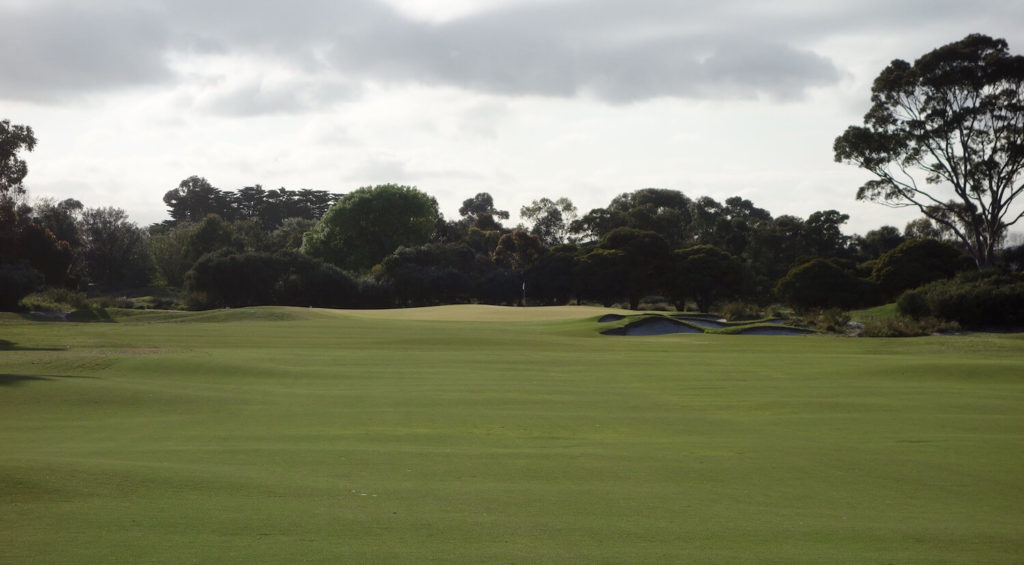
Hole #2 (Alternate Par 3) – This alternate par 3 is the recent design of Michael Clayton, but it fits extremely well with the rest of the course. The teeing grounds swing from right to left, so the approach angle can change to force more or less carry. With this 19th hole in the loop, the par 3 5th was taken out of rotation.
Hole #3 – This short dogleg left is a another Sandbelt gem. A wood or long iron gets you out to the corner, leaving a short iron or wedge into the green.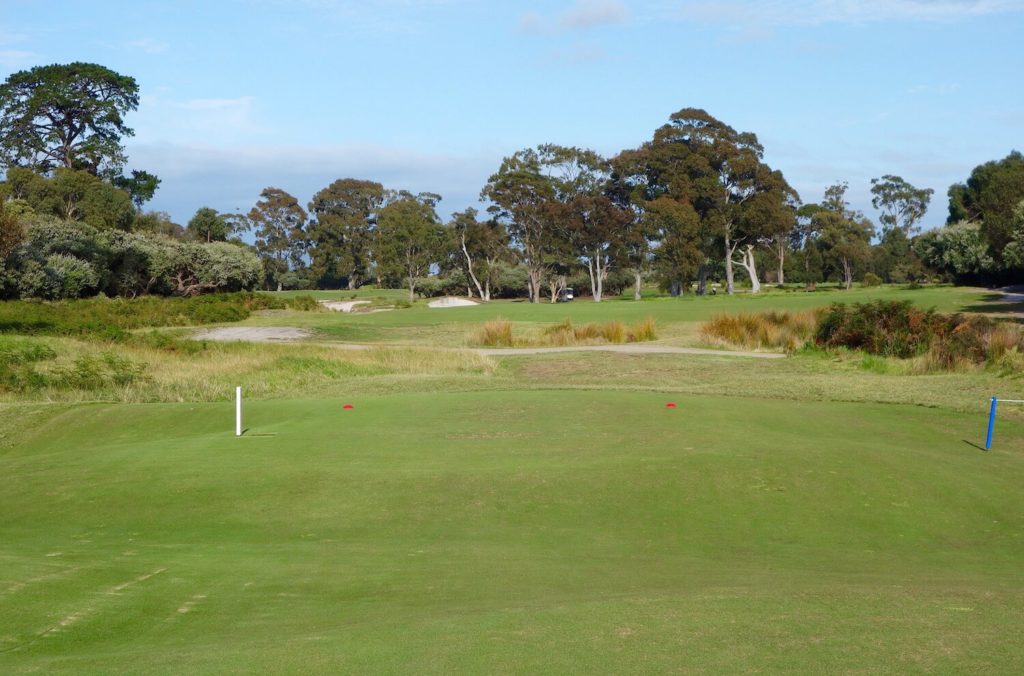
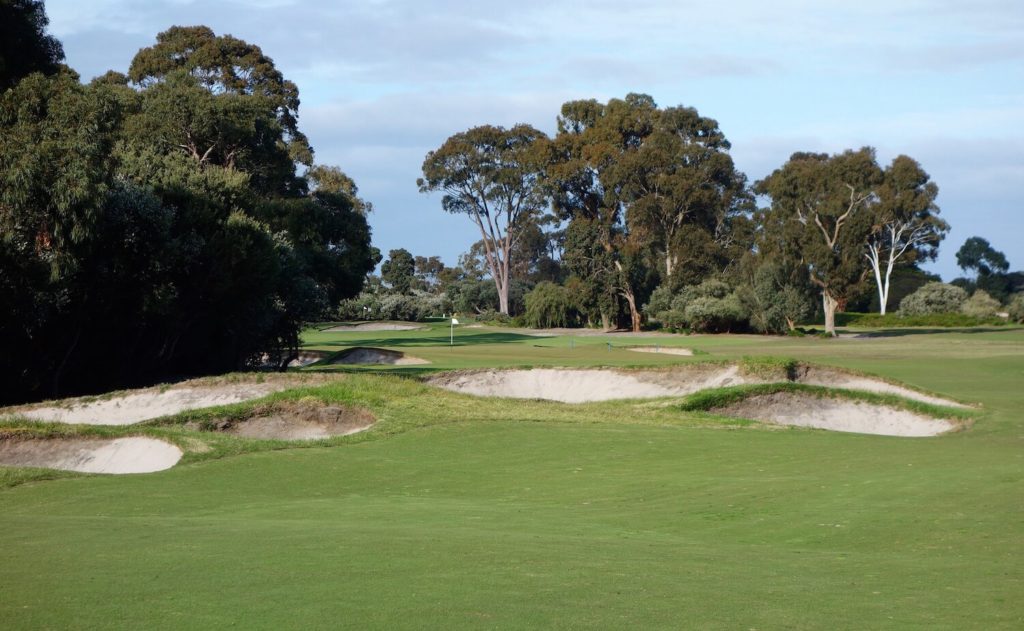
Hole #4 – I immediately wanted to play this hole again. The green is just beyond the bunkers on the right, but deciding on a line off the tee is a challenge for the first time visitor. Keep the ball out left and don’t challenge any of the bunkers on the right.

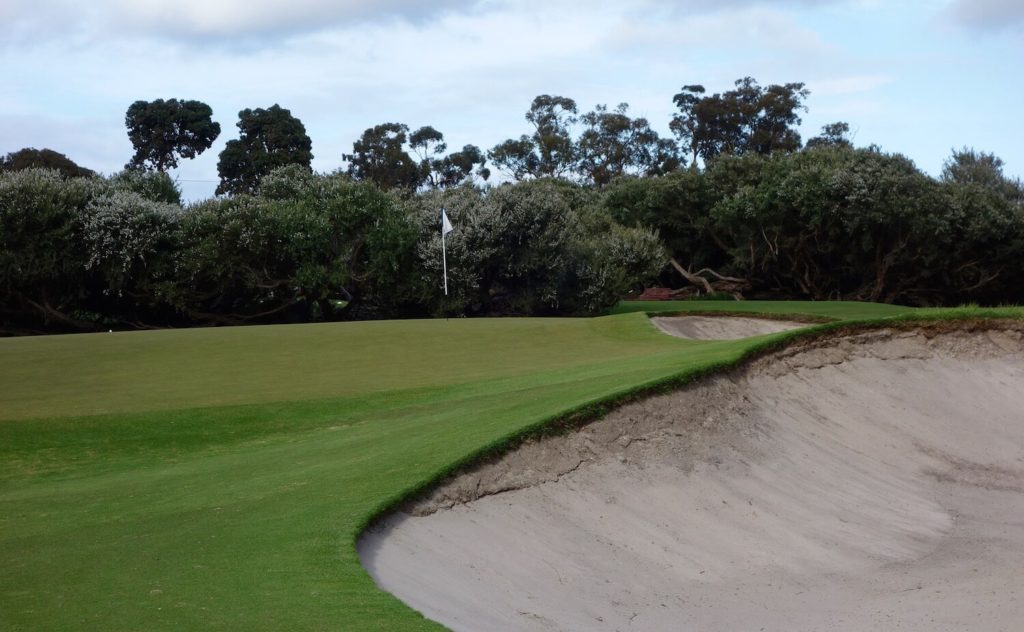
Hole #5 – The challenge of this hole depends on the pin placement. The front pin in the photos below is the easiest and the toughest is the back right pin, which brings the right greenside bunkers into play.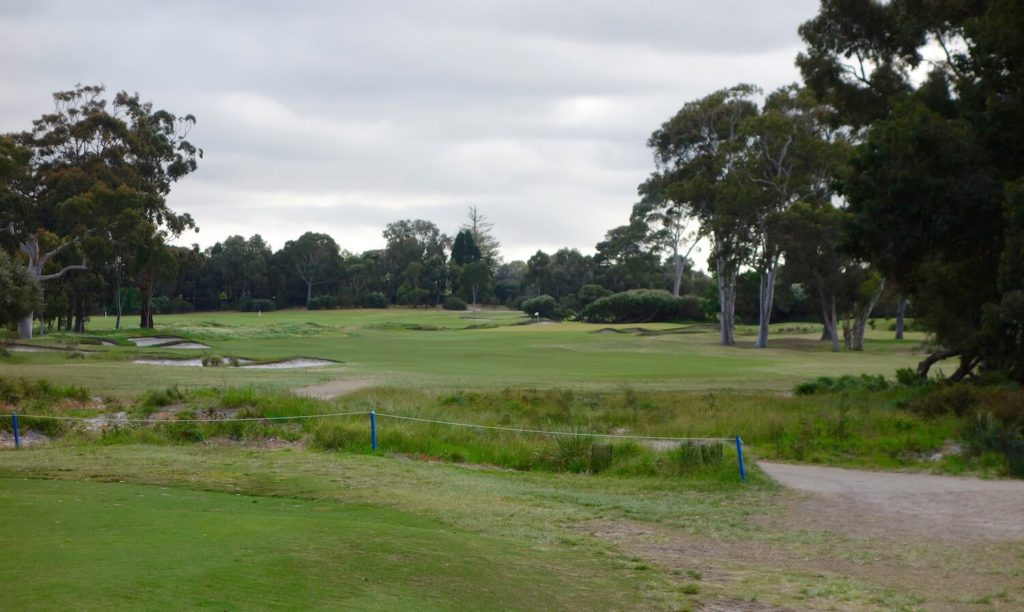

Hole #6 – Heading back to the clubhouse, the 6th features perfectly placed bunkers both in the fairway and beside the green. They aren’t overly penal or unfair, but make a mistake and they’ll capture you! 

Hole #7 – This was one of my favorite approaches on the course. It is a look that reminds me of the gorse-framed holes in Scotland, but the beautiful Sandbelt bunkering elevates it to the next level.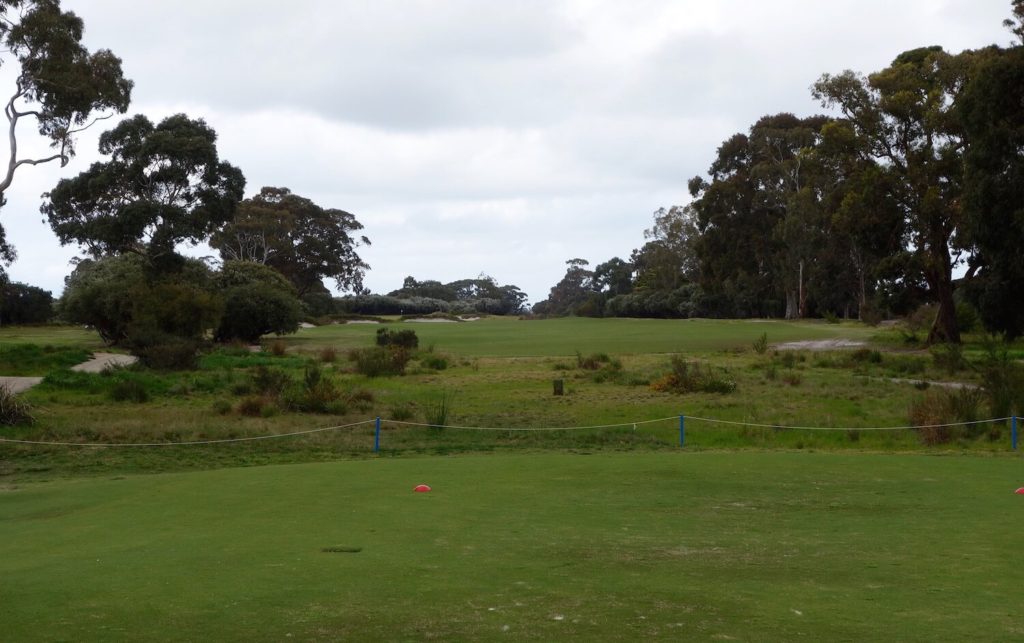
Hole #8 – The double green on this par 4 was one of my favorite complexes on the course. Yet again the front was open for running play, but if your approach drifts offline, you’re in trouble with those bunkers.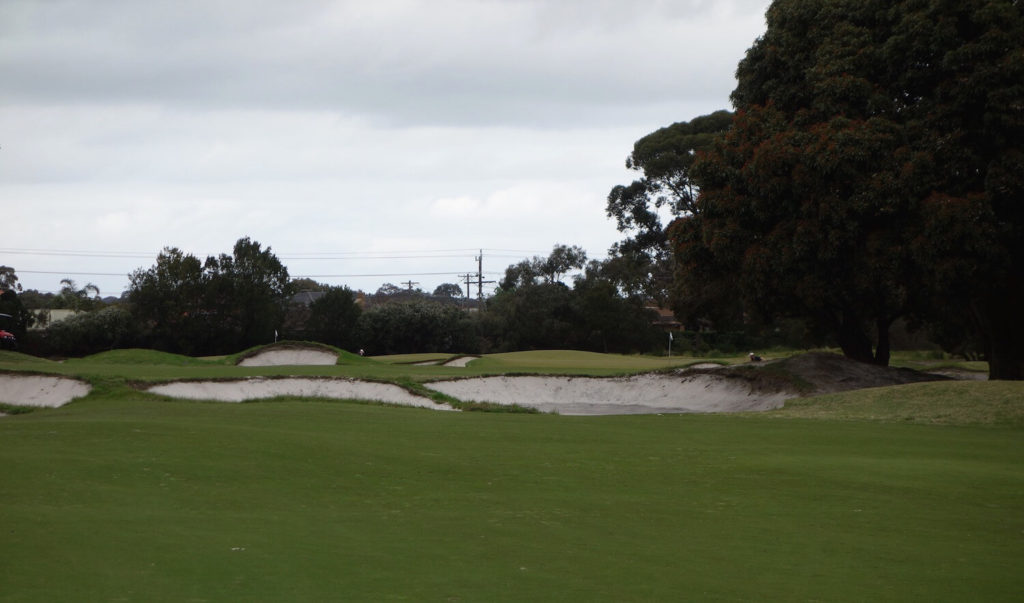
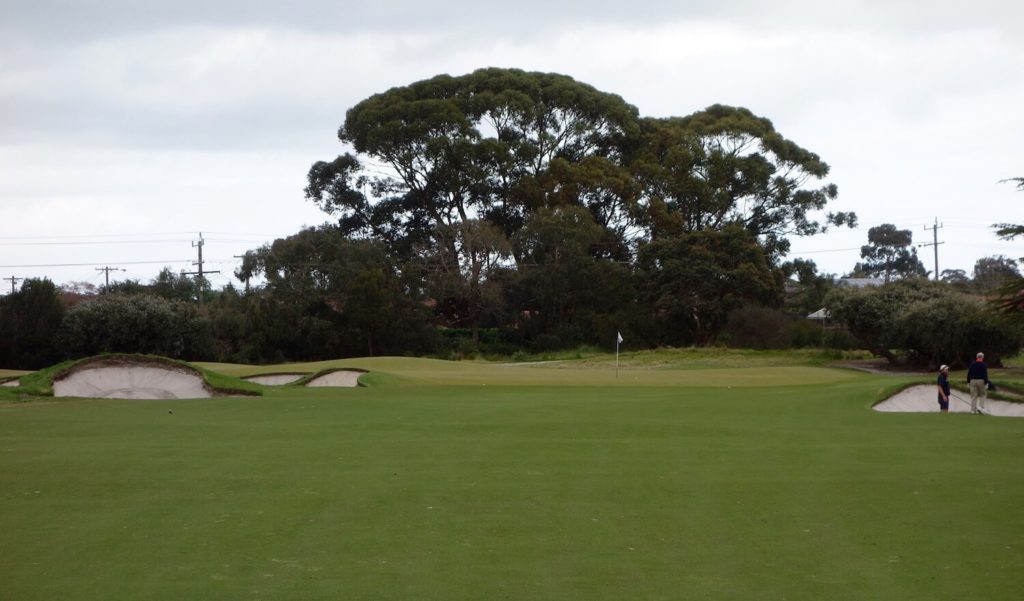
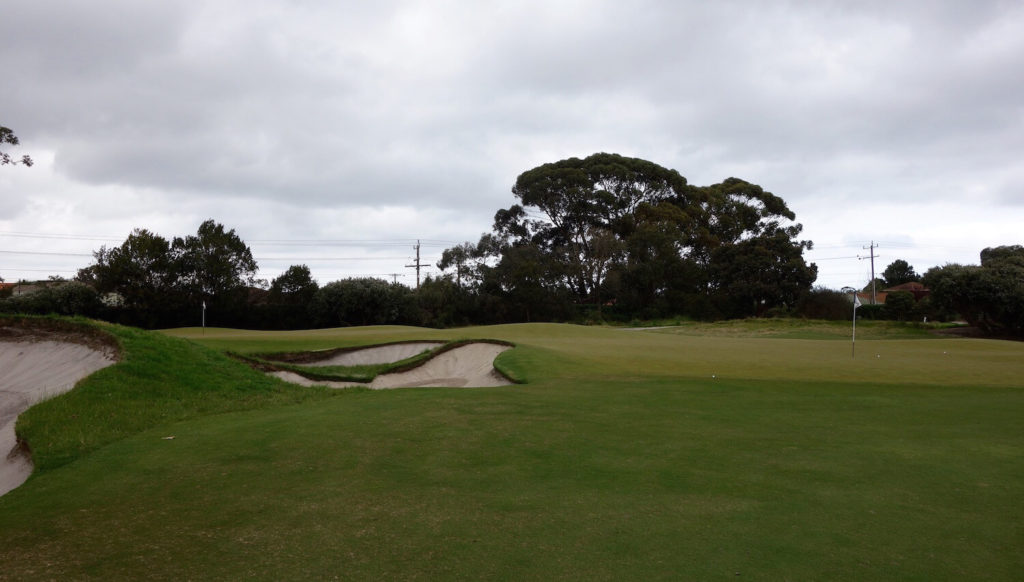
Hole #9 – A dogleg left with more artful bunkering. This hole reminded me of a few approaches you see at Royal Melbourne.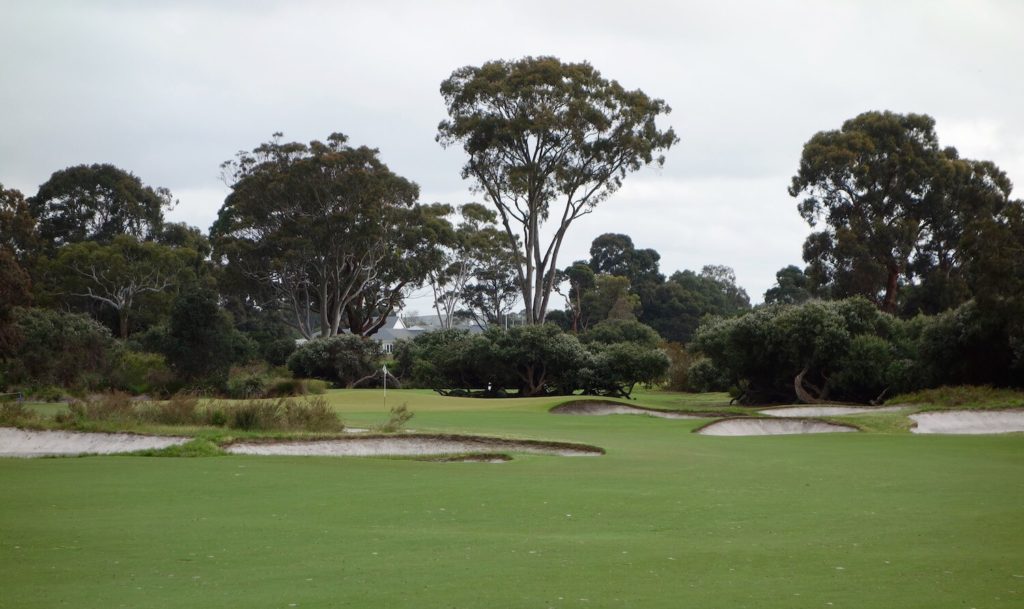
Hole #10 – A par 3 straight out of the Sandbelt playbook. The margin for error is so slim with these sharp-edged bunkers. Another effect of the bunkering is that it makes the green appear smaller than it actually is.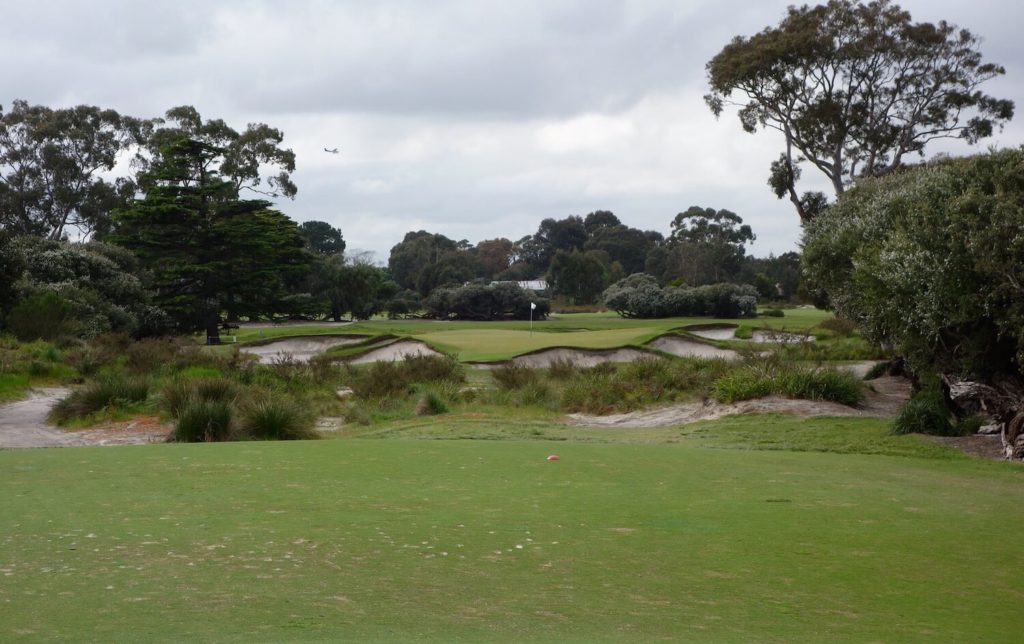
Hole #11 – The two photos below are a perfect example of how important approach angles are to scoring well at Kingston Heath. The right side of the 11th fairway is the first below, while the approach from further left is the second photo.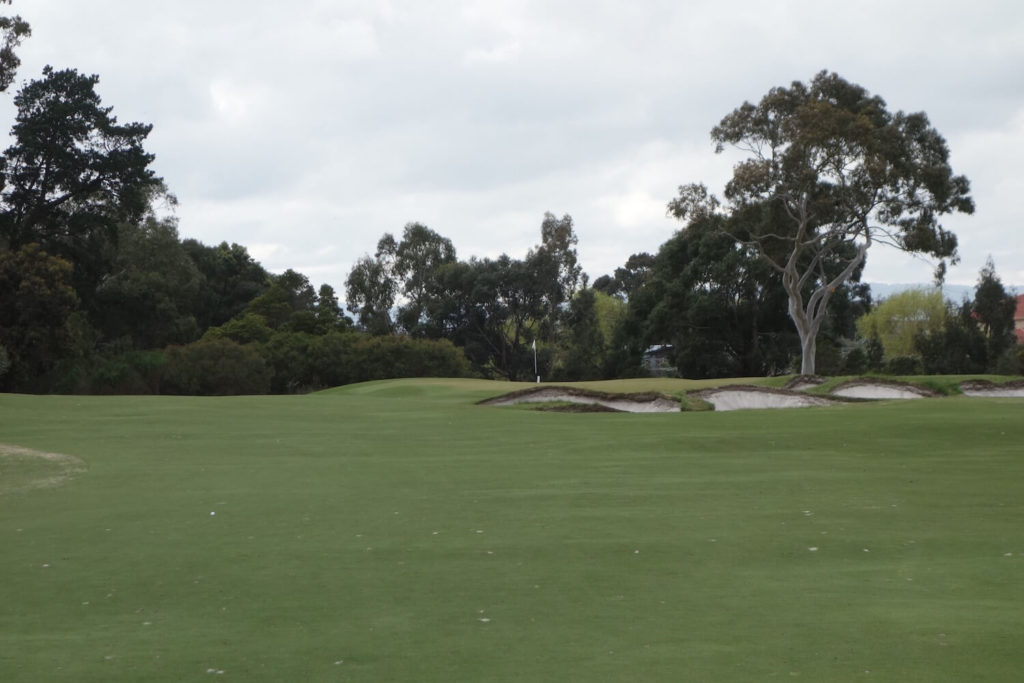
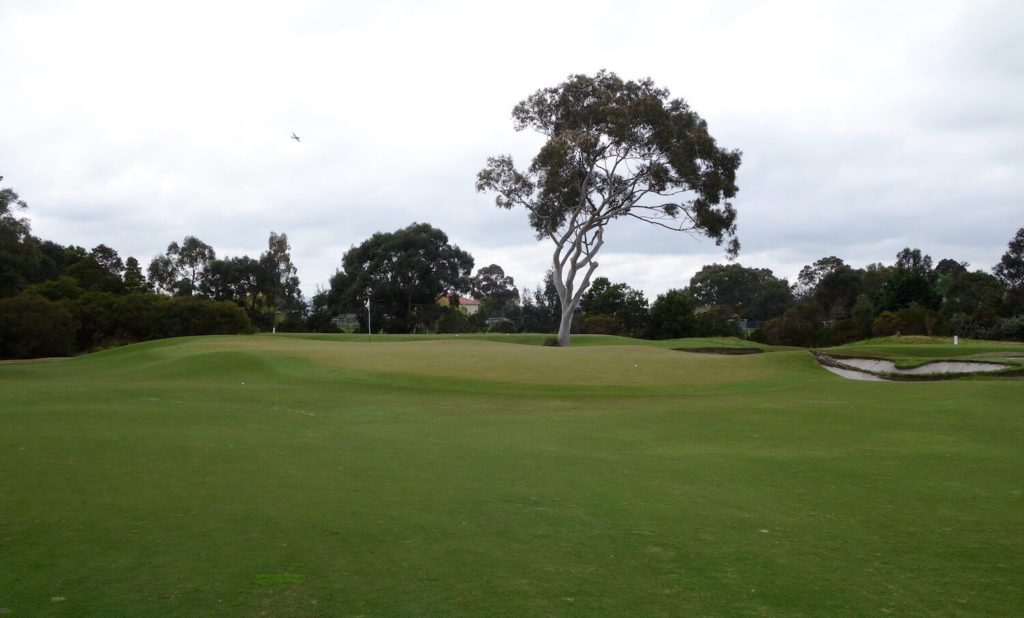
Hole #13 – In the Australian summer when the grasses are higher this hole would be framed beautifully. The front pin is the easiest on this green, but there is a deep hidden bunker behind the putting surface.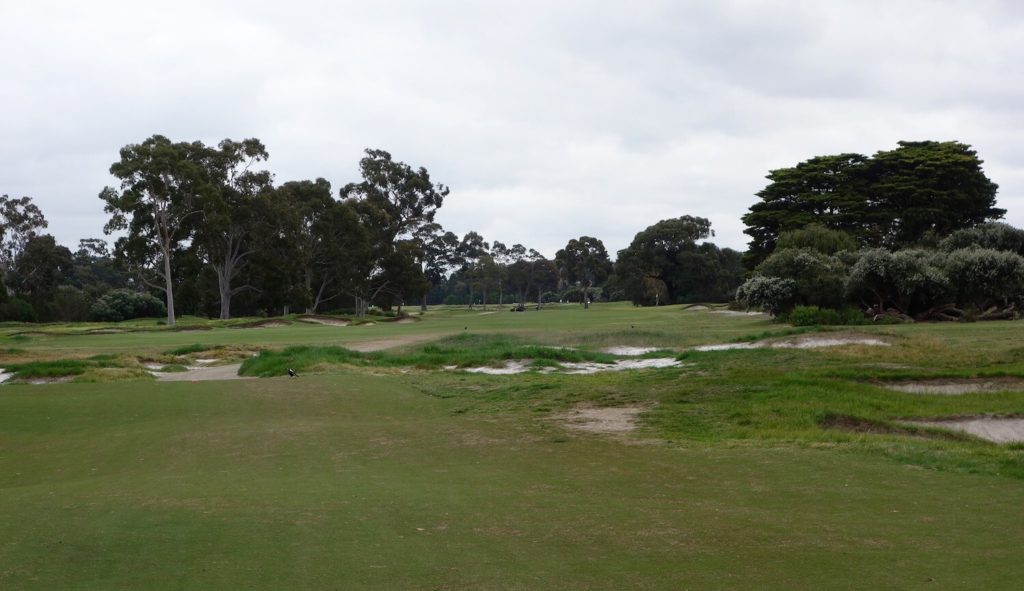
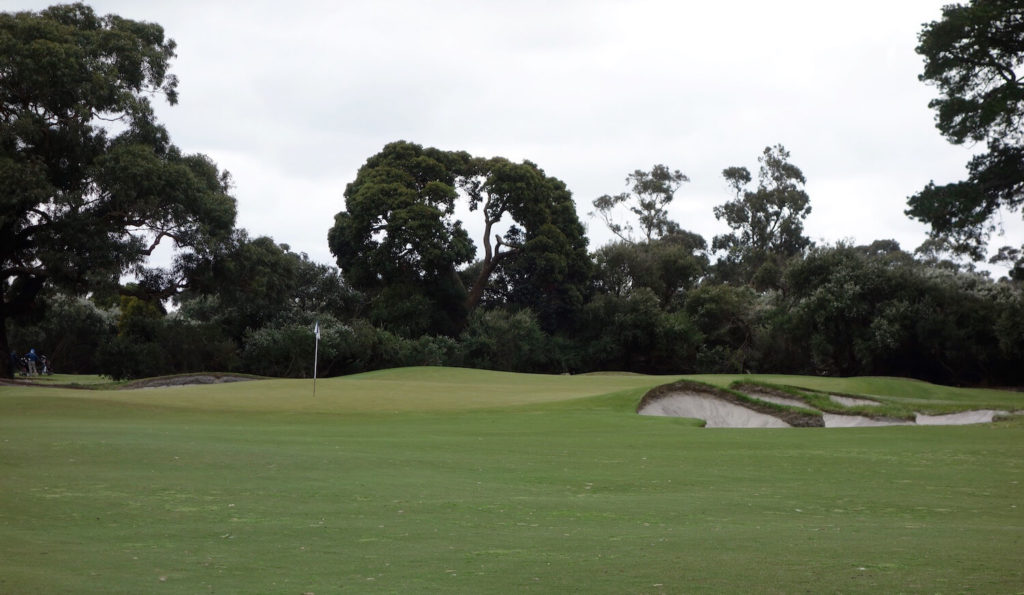
Hole #14 – A beautiful par 5 flows naturally across a gentle hill that bisects the entire Kingston Heath property. Long hitters can run a second shot up the right side of the fairway onto the green.
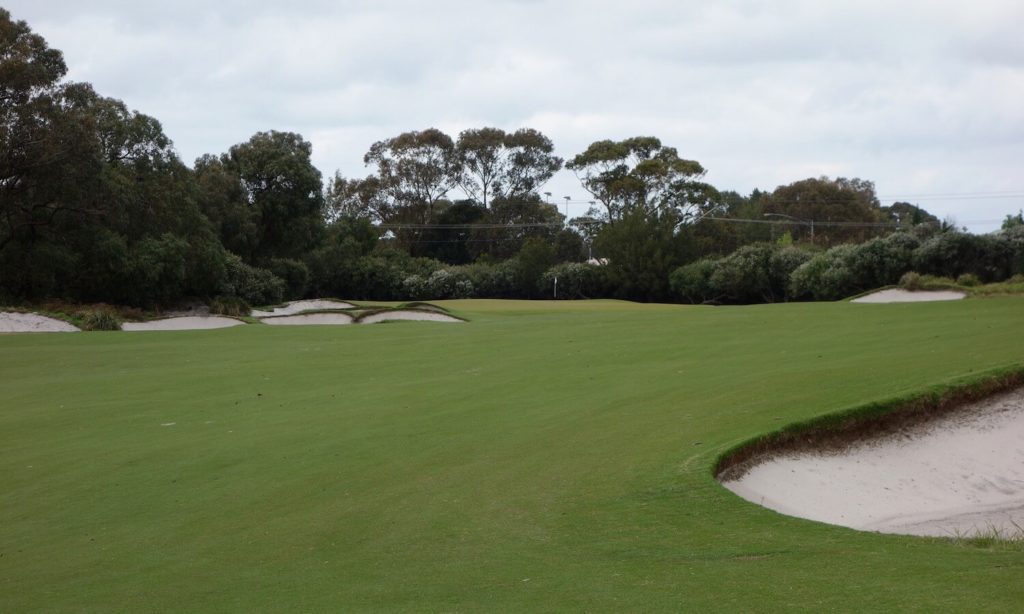
Hole #15 – The famous par 3 15th runs up the ridge of the aforementioned hill. Bunkers surround the green and cut into the putting surface to create that distinctive Sandbelt sharp-edged hazard. The green is also very deep, allowing for a wide range of pin placements.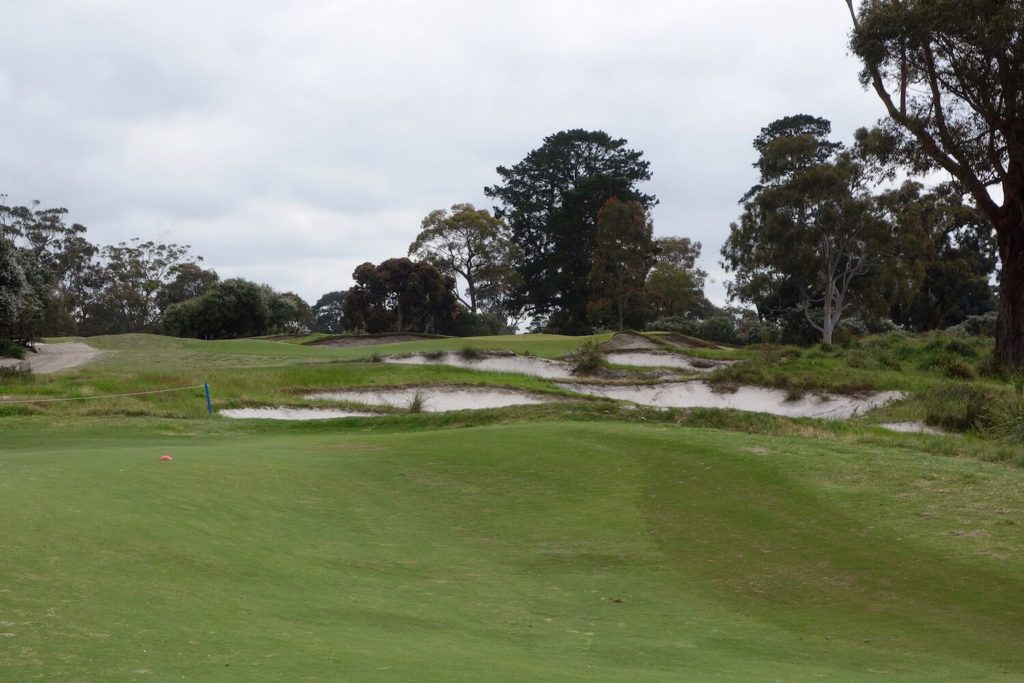
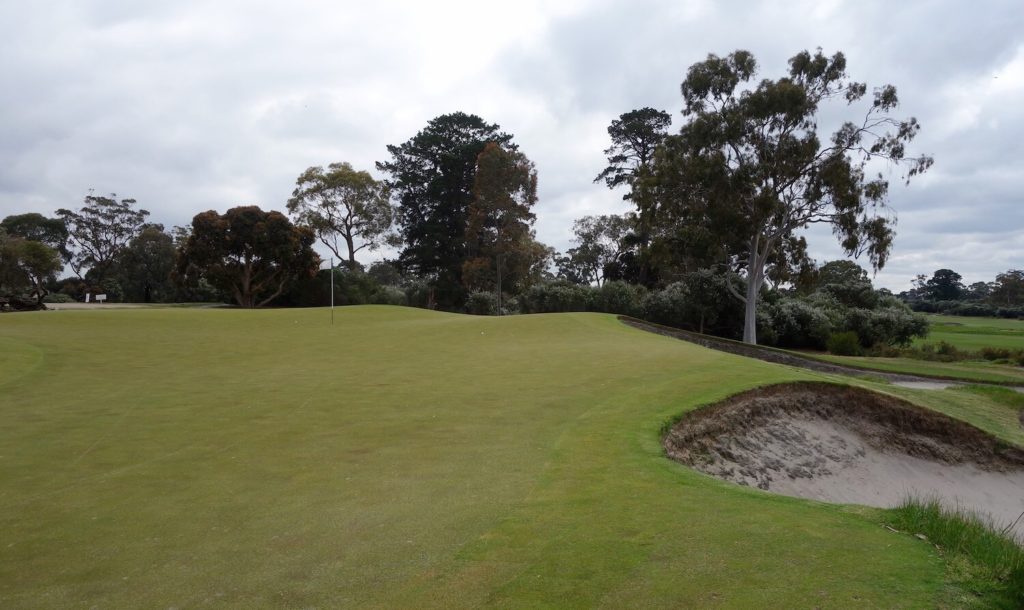
Hole #16 – The 16th swings hard from left to right followed by an approach to a relatively open green.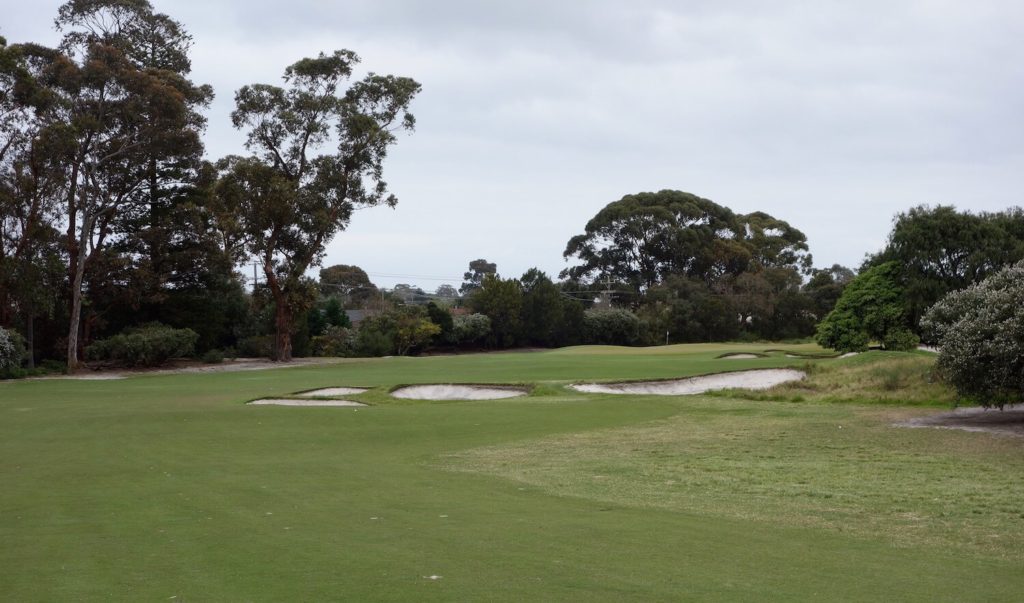
Hole #17 – The penultimate hole moves up and over a hill to a well-guarded green. Bunkers inside the slight dogleg can wreak havoc as you see in the second photo below!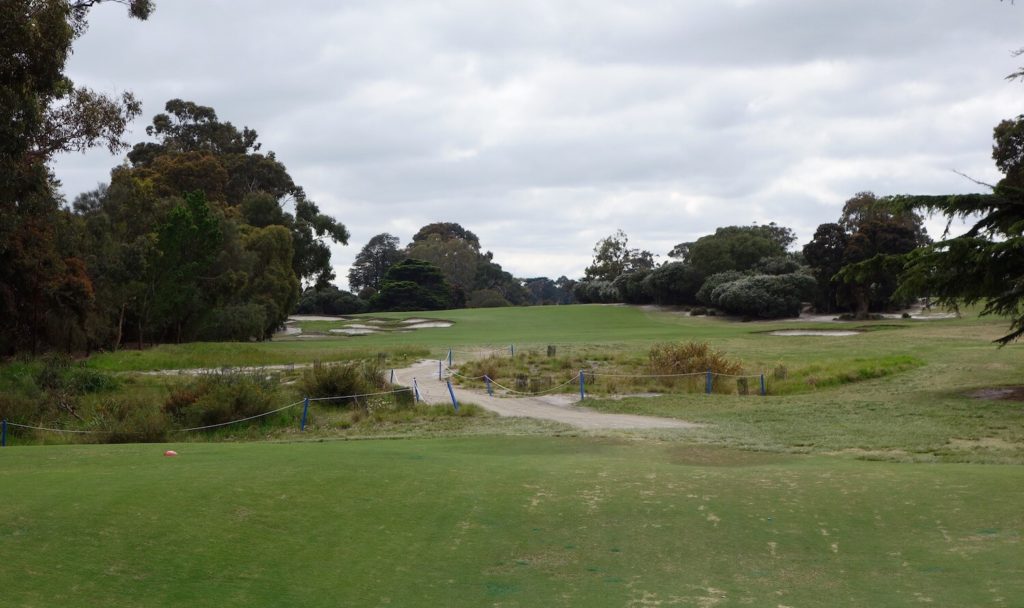
Hole #18 – The final par 4 sets up perfectly for a dramatic tournament finish. A wide fairway narrows to a large and well-bunkered green next to the white clubhouse. The huge putting surface is a final taste of the beautiful complexes seen throughout the round.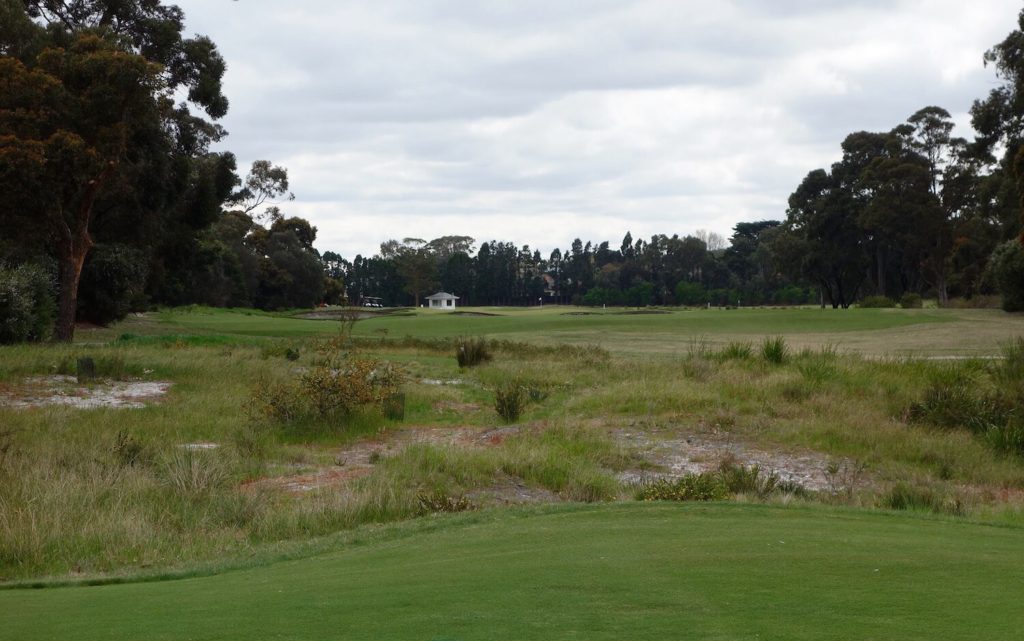

After the round we explored the clubhouse, which is full of interesting history and paintings. It also showed off one of my favorite things about Kingston Heath – it is packed full of character. One example is the mantle with bottles and engraved rings, each containing the names of those who have made a hole-in-one on the course. The rings date back many decades and the tradition continues to this day.
The course at Kingston Heath embodies everything great about the Australian Sandbelt. The experience is elevated to the next level by the clubs treating guests as if they really are honorary members. The result is an experience that leaves you wanting more and dreaming about going back. If you were to ask me or my dad about the first round we would book if going back to Australia, I think we’d both answer Kingston Heath… I just hope that day comes sooner than later!

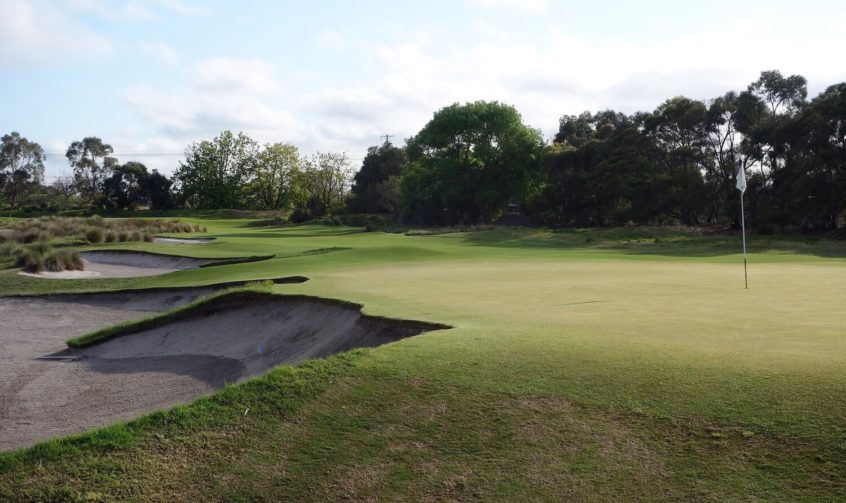

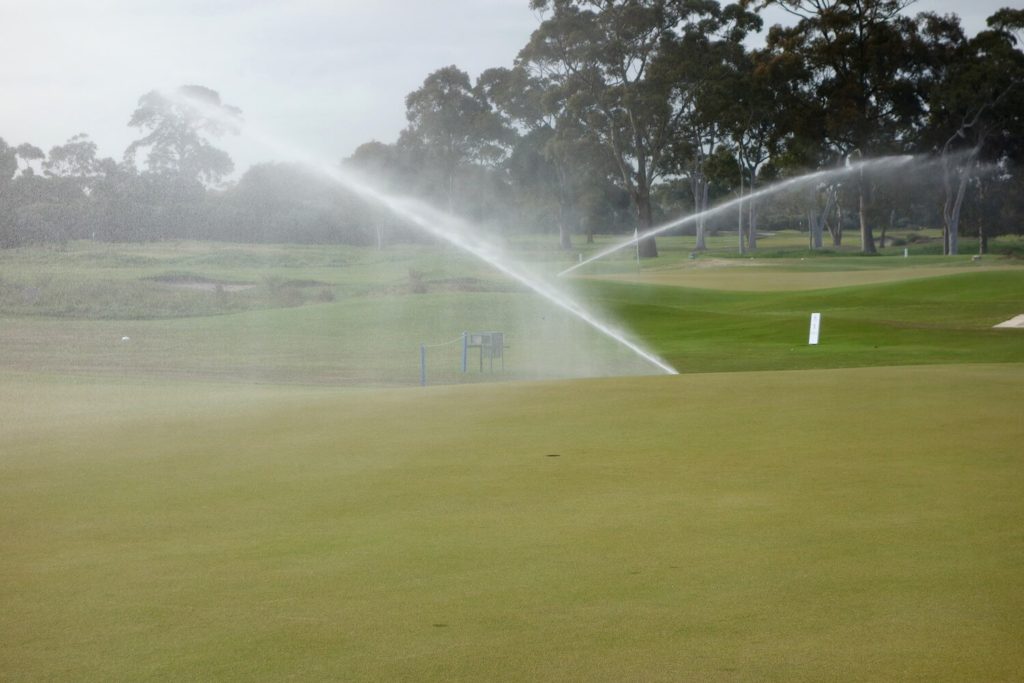

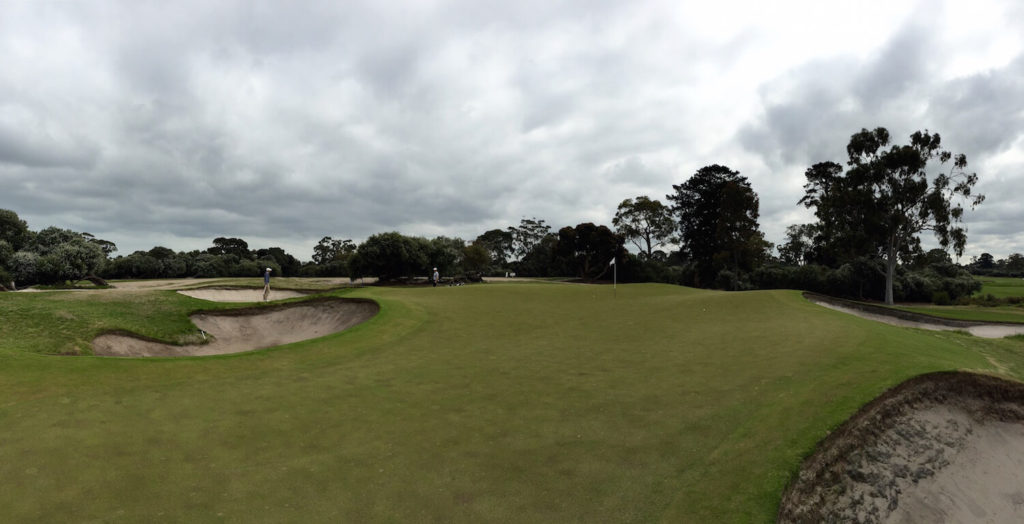

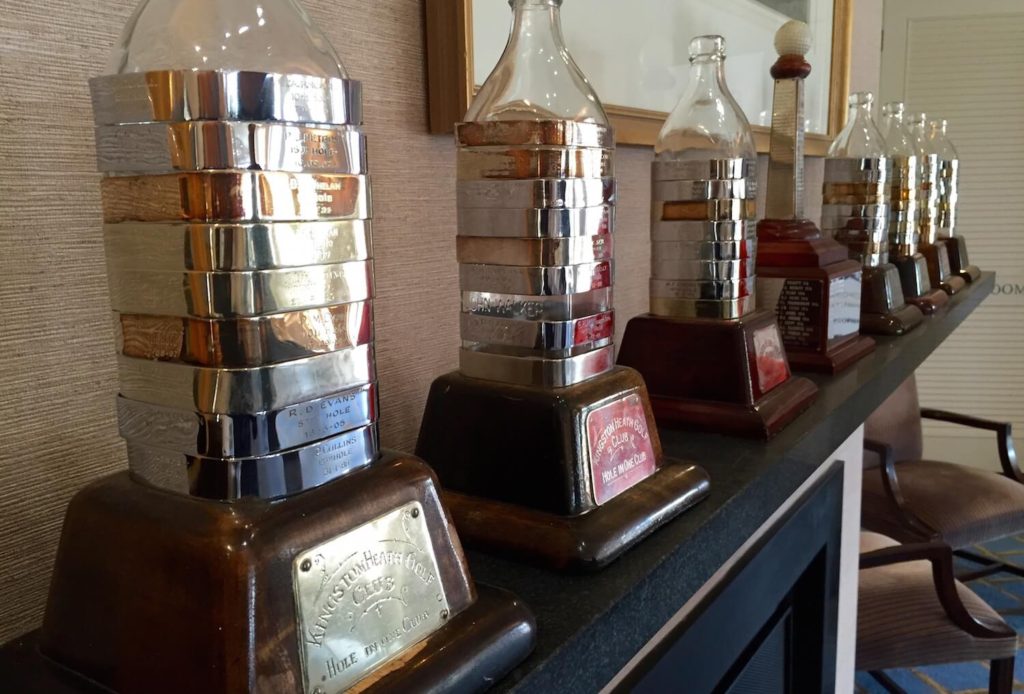
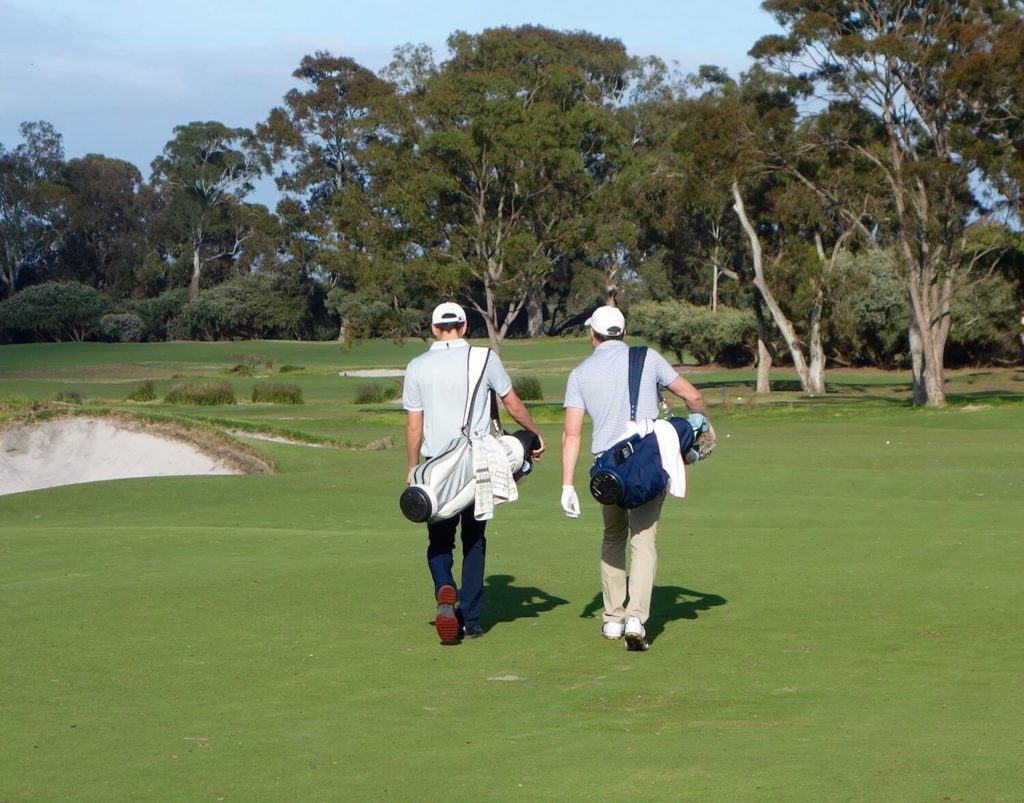
2 Comments on “Kingston Heath Golf Club Review”
Graylyn – Well done, you captured the essence of Kingston Heath perfectly. I agree with it is on a par with some of the best in the world like Shinnecock (or I thought Merion since it’s a small property). Your review brought back great memories since I first met my two crazy Kiwi friends at Kingston Heath. Keep up the great work. John
I agree with you Graylyn, a super course with accommodating people.
The club president greeted me in the pro shop and was most welcoming. A member, who was playing that day, noticed that I was a visitor and a single, so he asked to be put with me so he could impart course knowledge to me. The course is a classic, much better than overrated and grossly expensive layouts like Cape Kidnappers and Kauri Cliffs. Save your money and instead of playing thr latter two, play the sandbelt courses of Kingston, Royal Melbourne, Victoria and Metropolitan Club.